Play
Maxwell Anderson dedicated the play to his nephew Sgt. Lee Chambers, who was killed in a military accident. [1] When researching the contemporary U.S. Army for the play at Fort Bragg, North Carolina, Anderson was assigned a representative from the Army's public relations department named Marion Hargrove. The two became friends and Anderson based the character of Private Francis Marion on him. Anderson also recommended Hargrove's stories of army life to his publisher. When published as See Here, Private Hargrove , Anderson wrote a foreword to the book. [2]
The play opened on October 7, 1942, and closed on June 26, 1943 after 307 performances. [3]
A London stage version was directed by Gabriel Pascal, with many of the roles played by American servicemen posted in England. [4] One of the soldiers in the play was John Sweet, [5] whom Michael Powell chose for the lead in his A Canterbury Tale . [6]
Film
After bidding by several Hollywood motion picture companies, 20th Century-Fox obtained the film rights to the play for $300,000. The studio agreed not to release the film before January 1944, when the play was expected to finish. [7] The film was directed by John M. Stahl with Michael O'Shea, George Matthews, Joann Dolan, Joven E. Rola and Toni Favor repeating their original stage roles. It also featured Anne Baxter, Harry Morgan and Vincent Price. The film cost $1.4 million to produce. [8]
To comply with the Motion Picture Production Code, the script was modified to avoid the play's sexual references and language. The film originally included the play's closing scene, but it was overwhelmingly rejected by war-weary test-screening audiences. A new ending was filmed with a more hopeful tone.
Screenwriter George Seaton recalled that he was unable to meet with Stahl before or during the filming and was unsatisfied with the end result. Though Seaton's screenplay remained intact, Stahl's areas of emphasis differed from those that Seaton had intended, and Stahl recommended that Seaton become a director himself. [9]
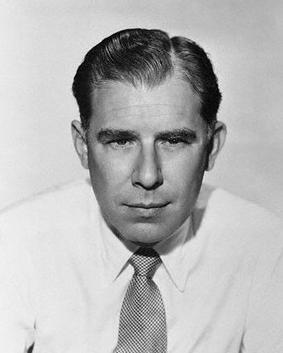
George Seaton was an American screenwriter, playwright, film director and producer, and theatre director.

Preston Sturges was an American playwright, screenwriter, and film director. Sturges took the screwball comedy format of the 1930s to another level, writing dialogue that, heard today, is often surprisingly naturalistic and mature, despite the farcical situations. It is not uncommon for a Sturges character to deliver an exquisitely turned phrase and take an elaborate pratfall within the same scene.
Janet Louise Hubert is an American film and television actress. She is best known for playing the role of the original Vivian Banks on the sitcom The Fresh Prince of Bel-Air from its first season in 1990 until the end of its third season in 1993. Hubert was nominated for an NAACP Image Award for Outstanding Actress in a Comedy Series for her role in 1991. Her performance as Mignon on the digital series King Ester garnered her first Daytime Emmy Award nomination in 2020.

John Dall was an American actor.
Hugh Martin was an American musical theater and film composer, arranger, vocal coach, and playwright. He was best known for his score for the 1944 MGM musical Meet Me in St. Louis, in which Judy Garland sang three Martin songs, "The Boy Next Door", "The Trolley Song", and "Have Yourself a Merry Little Christmas". The last of these has become a Christmas season standard in the United States and around the English-speaking world. Martin became a close friend of Garland and was her accompanist at many of her concert performances in the 1950s, including her appearances at the Palace Theater.

William John Eythe was an American actor of film, radio, television and stage.

John Howard Payne was an American film actor who is mainly remembered from film noir crime stories and 20th Century Fox musical films, and for his leading roles in Miracle on 34th Street and the NBC Western television series The Restless Gun.
St. Mark's Eve is the day before the feast day of St. Mark the Evangelist. In liturgical Christian churches, this feast of St. Mark is observed on 25 April of each year; thus St. Mark's Eve is 24 April.

John Malcolm Stahl was an American film director and producer.
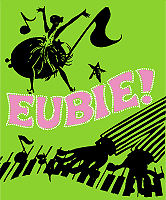
Eubie! Is a revue featuring the music of jazz/swing composer Eubie Blake, with lyrics by Noble Sissle, Andy Razaf, Johnny Brandon, F. E. Miller, and Jim Europe. As with most revues, the show features no book, but instead showcases 23 of Eubie Blake's best songs. The idea of the show was conceived by Julianne Boyd. It opened in 1978, receiving positive reviews from Time, Newsweek, Variety, Backstage, and The Today Show.
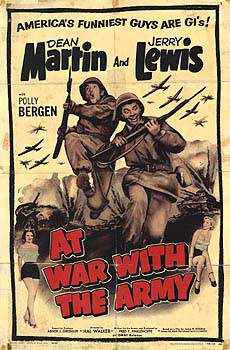
At War with the Army is a 1950 American musical comedy film directed by Hal Walker, released by Paramount, starring the comedy team of Martin and Lewis and introducing Polly Bergen. Filmed from July through August 1949, the film premiered in San Francisco on New Year's Eve 1950. It was re-released in 1958 by OMAT Pictures.

Helen Vinson was an American film actress who appeared in 40 films between 1932 and 1945.
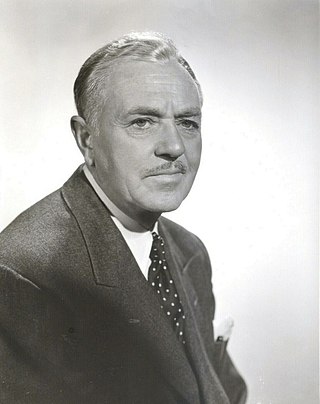
Stanley Charles Ridges was an English-born, American actor who made more than 100 appearances in theatre and movies from 1917 to 1951.
Anthony Powell was an English costume designer for film and stage. He won three Academy Awards, for Travels with My Aunt (1972), Death on the Nile (1978) and Tess (1979).
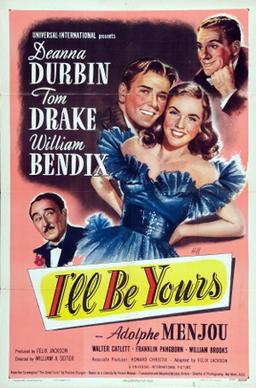
I'll Be Yours is a 1947 American musical comedy film directed by William A. Seiter and starring Deanna Durbin. Based on the play A jó tündér by Ferenc Molnár, the film is about a small-town girl who tells a fib to a wealthy businessman, which then creates complications. The play had earlier been adapted for the 1935 film The Good Fairy by Preston Sturges.

Frederick Leister, was an English actor. He began his career in musical comedy and after serving in the First World War he played character roles in modern West End plays and in classic drama. He appeared in more than 60 films between 1922 and 1961.
John Baragrey was an American film, television, and stage actor who appeared in virtually every dramatic television series of the 1950s and early 1960s.
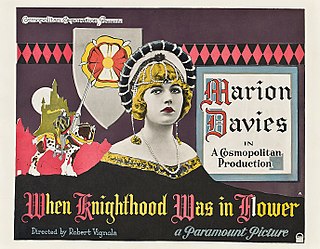
When Knighthood Was in Flower is a 1922 American silent historical film directed by Robert G. Vignola, based on the novel by Charles Major and play by Paul Kester. The film was produced by William Randolph Hearst for Marion Davies and distributed by Paramount Pictures. This was William Powell's second film. The story was re-filmed by Walt Disney in 1953 as The Sword and the Rose, directed by Ken Annakin.

The Anco Cinema was a former Broadway theatre turned cinema at 254 West 42nd Street, between 7th and 8th Avenues in Manhattan, New York City. It opened in 1904 and was originally named the Lew Fields Theatre. It continued to operate as a playhouse under various names until it was converted into a movie theatre in 1930. Its block was famous for its concentration of Broadway theatres turned cinemas. After World War II, the street declined and the Anco Cinema eventually became a pornography venue. It closed as a cinema in 1988 and was gutted for retail use. The building was demolished in 1997.
Frank Mandel was an American playwright and producer. He co-wrote several productions. Some of his works were adapted by others. Several of his collaborations were adapted into films. UCLA's libraries have a collection of his papers.














